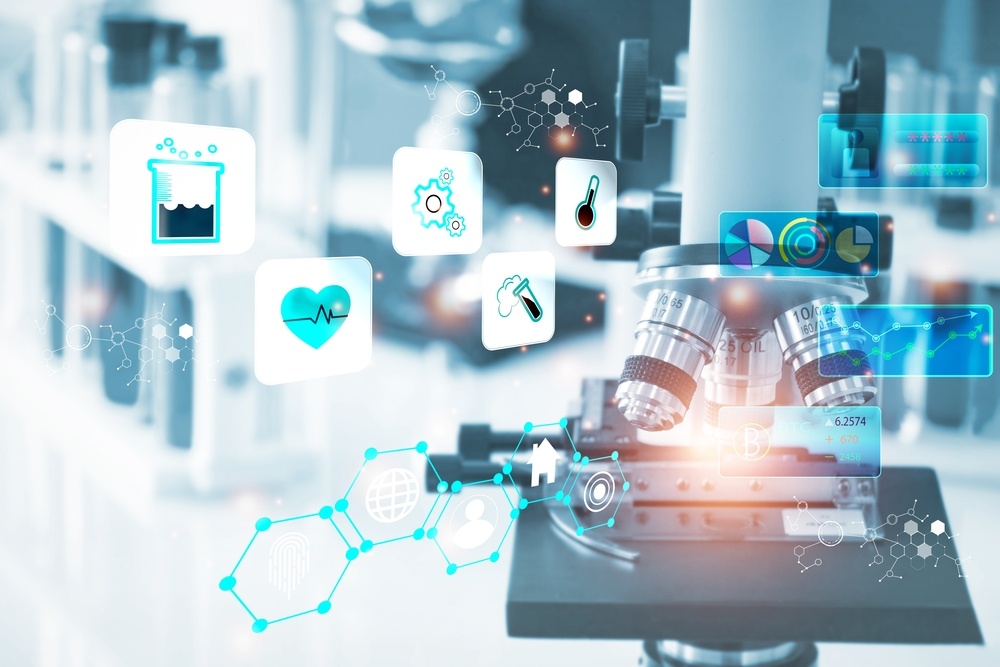
– when they matter most
With growing waiting lists, strict government targets, and increased demand, everyone involved in diagnostics is under pressure to work faster. But efficiency and speed are also vital to improving the most important thing of all: patient outcomes.
In November 2022, NHS England announced a landmark move to speed up cancer diagnosis or all-clear for patients. For the first time, GPs across the country can access fast-track testing, with direct orders of CT scans, ultrasounds, and brain MRIs. Crucially, the availability of these tests extends to those patients whose symptoms fall outside the NICE guideline threshold for urgent referrals.
For patients, this reflects a continued effort from the NHS to accelerate pathways through the diagnosis to treatment. However, for already overloaded diagnostic teams, radiologists and pathologists, it heightens the need to transform – and accelerate – ways of working.
Early diagnosis creates better patient outcomes
According to Cancer Research UK, 4 in 10 cancer cases are diagnosed through an urgent suspected cancer referral. This creates a significant gap between the most urgent referrals and those patients with concerning symptoms who would experience a longer wait for screening.
Easier access to tests across the NHS is an important step towards better outcomes. But this also moves the potential bottleneck in diagnosis and treatment to radiologists and pathologists, now facing unprecedented demand.
More than ever, healthcare professionals need faster ways to report – without compromising accuracy and precision.
How speech recognition delivers speed, accuracy and quality
As an intuitive, natural way to create reports and transcribe information, speech recognition (SR) has the potential to dramatically accelerate how pathologists report. Compared to typing, speech is as much as five times faster.
At the same time, these speed and efficiency gains are only as meaningful as they are accurate. Increasingly, AI and machine learning mean SR can deliver accuracy beyond 99%, in any accent, with a language model developed for clinical terminology.
As a result, diagnostic teams can keep pace with the rest of the NHS as it continues its transformation to faster, more efficient and secure ways of working and delivering care.
How Augnito fast-tracks pathology workflows
The NHS is understandably focused on new ways to make frontline care and patient journeys faster. But these journeys are all interwoven – and ultimately limited – by the speed with which the departments involved in diagnosis can work.
Augnito was developed in partnership with healthcare professionals to make workflows faster and more flexible, while preserving accuracy and quality. With standalone applications or integrated into existing clinical systems, Augnito delivers the accuracy that patient outcomes depend on.
However, Augnito also empowers pathologists and radiologists to improve the way they work day-to-day. Creating reports is as easy as speaking, sharing information can be highly automated and secure, and our suite of platforms means professionals can report from anywhere.
It’s more than an alternative way to create the same reports. It’s a way to rethink how diagnosis works and dramatically improve patient care with a measurable impact on productivity and efficiency.
Finally, Augnito makes workflow transformation more available and accessible with a flexible, cost-effective approach to implementation and management. As a cloud-hosted technology, Augnito doesn’t require changes to infrastructure and IT. It’s easy to switch on and start using on any scale, with data security, compliance and management taken care of by our expert team.
Try a faster way of working
Augnito is already impacting the patient journey through our growing list of UK customers and partners. Request an evaluation version or try the Augnito app to see how you can start to benefit from faster reporting, efficient diagnostics and securely impacting the patient journey for a better continuum of care.

